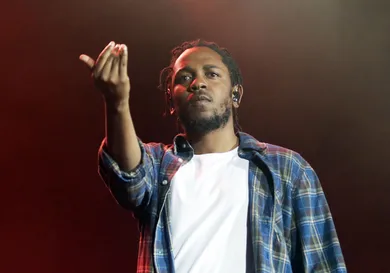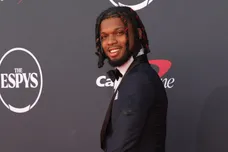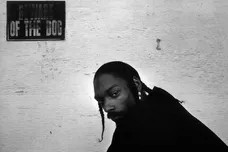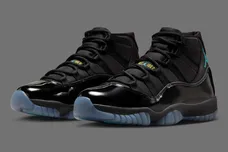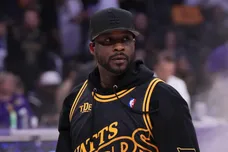Being multifaceted is a gift and a curse. Should a segment of one’s fanbase become enamored with a specific stylistic choice, they might prove less susceptible when faced with an alternative. A basic example applies to those with both “bars” and “melodies.” When a rapper proves capable of demolishing an instrumental, it’s not always easy to accept restraint. Yet versatility is among the chief pillars of longevity. Case in point, Kendrick Lamar, who rose from a cornerstone member of Black Hippy to the face of musical auteurship. It’s still surreal to ponder that the man who unleashed his infamous “Control” upon the world holds a Pulitzer Prize. But such is the allure of Kendrick Lamar, arguably the most brilliant writer in hip-hop.
Conceptual though he may get, nuanced though his penmanship may be, it must never be forgotten that Kendrick is an emcee in the truest sense. Whether he’s conjuring bars from thin-air over DJ Screw’s “June 27th” or devilishly mischevious fantasies about hip-hop’s baddest on “Black-Lipped Bastard,” Kendrick has embodied a rapper’s rapper from the onset. In a crew of lyricists and bonafide gangsters, K. Dot exuded gravitas through his meticulously crafted verses, establishing himself as a force to be reckoned with - even within the ranks of his own squadron. For those feeling nostalgic for Kendrick’s no-nonsense barrage of bars, consider the following reminders of his destructive capabilities.
Though much has been made of Nicki Minaj’s take on “Monster,” the mixtape years found a young and hungry K Dot rising to the occasion. 2010’s “Monster Freestyle” came complete with a notably lo-fi video, which enhanced the effect of its DIY charm. As he slides over the Kanye instrumental, wide-eyed and voice trembling, he actually pulls out a vintage trick from his “Control” playbook. “Jigga man should’ve retired,” he raps, revealing insight into whom he deemed the “Mount Rushmore” of lyricism at the time. “I’m going after Kanye, Lupe Fiasco, and Nas, Snoop Dogg and mister Andre, Eminem, Busta Buss Rhymes.” Not only current contemporaries, but legends can and will get it. Yet the question remains, why does Big Boi get no love in these situations? Where’s the love for Daddy Fatt Saxx?
Kendrick Lamar’s turn on the Black Hippy Remix of “Black Lip Bastard” is refreshing in its purism. The track is evocative of peak underground hip-hop, retaining the charm of a posse-cut despite the close-knit nature of the clique. Kenny is tasked with kicking things off, not exactly an unenviable position, but one he makes quick work of. Approaching the brooding cinematic beat with a devilish air about him, Kendrick delivers a playful blend of battle-rap and Eminem-esque imagination, that he would eventually shed during the maturation process. Though not entirely, as “Humble’s” call for “taste-blood” satiation came to reveal.
Though a dense and highly conceptual listen across the board, Section 80 did retain the spirit of Overly Dedicated by way of “Rigormortis,” aka an excuse for Kendrick to absolutely spazz over a jazzy loop from Willie B. As the song progresses, Kendrick catches the unconventional pocket, stringing together multi-syllabic structures at a caffeinated speed. It’s appropriate he opens with a Matrix reference, given the Neo-esque fashion with which he delivers rhymes. See, the thing about Lamar is that he seldom falls into “rappity-rap” trappings of nothing-speak; no matter how complex his flow-scheme may be, his clever mind finds ways to sharpen each stanza with value. By the time he closes out this Section 80 standout, Kendrick has essentially transitioned from man to beast, though never losing composure. Double-time is nothing to him.
It’s impossible to overlook “Backseat Freestyle,” perhaps the quintessential marriage of conceptual framework and unmitigated bars. Framed as an everyday freestyle session, in which young rap prodigy “good kid” Kenny impresses the homies with his lyrical prowess, “Backseat Freestyle” checks a variety of boxes. For one, it makes it clear that Kendrick can hang beyond the intellectual circles, bringing forth a sense of untamed swagger reserved only for special occasions. Even to this day, “Backseat Freestyle” finds Kendrick exploring some of his best cadential manipulations, as he attacks Hit-Boy’s production unfettered by the confines of traditional song structure. It’s not often that Kendrick allows himself room for amusement, but when he does, it’s the type of play that occasionally leaves limbs broken.
“Control” has become infamous by this point, a verse that many current-day emcees still hold as the pinnacle of the craft. Though ostensibly Big Sean’s song, Kendrick Lamar successfully pulled off the rare feat of “track hijacking,” seizing the reigns and leaving the instrumental in smoldering ruins. It’s not often that a single verse can break the internet, in which the catalyst is generally a bare ass, but Kendrick Lamar managed to do exactly that. In a callback to “Monster,” we also secured a window into Kendrick’s view on the hip-hop landscape circa 2013, which found him turning his sights from his OGs to his peers. Yet even without the iconic roll-call, “Control” serves as a reminder that Kendrick can hop onto a track and make anyone look silly, should he be so inclined. Such are the benefits of his brilliance, or what might happen when a good kid decides to use his power to commit atrocities.
The Kendrick Lamar and J. Cole collaborative album may be somewhat of a hip-hop unicorn, but that doesn’t mean we can’t gather round what little hoof-prints we have. Billed as “a gift from Kendrick Lamar” delivered by way of Cole himself, “Black Friday” found Kendrick slaughtering “A Tale Of Two Citiez” like a man possessed. A vocal advocate for humility, it’s not exactly common for Kendrick to resort to empty acts of boasting. Yet when he does, he does it with great distinction, blending strong imagery (the Andre 3000-esuqe “meditating with candles lit” leaps off the page) with genuine moments of real-life experience (juggling gang-banging with 10,000 hours of hip-hop training). And while the track features three minutes of uninterrupted rapping, Kendrick’s flow undergoes several states of transformation, a process that might leave lesser emcees in shambles.
When To Pimp A Butterfly standout “Hood Politics” opened with a “boo-boo” centric chorus, you knew it was about to be hard. The most overtly “hip-hop” track on the avant-garde project, “Hood Politics” finds Kendrick taking it back to the block, shifting his cadence to a high-pitched, frantic state. Shades of Good Kid-esque storytelling emerge, with Kendrick spitting lines like “hopped out the Caddy, just got my dick sucked, the little homies called and said, "the enemies done cliqued up / Oh, yeah? Puto want to squabble with mi barrio? Oh, yeah? Tell 'em they can run it for the cardio.” Structurally, the track is a wealth of material, with three well-rounded verses and countless quotable reflections; “democrips and rebloodicans” and an effective reminder that Killer Mike has been putting in work are but a few of “Hood Politics” most memorable musings.
Though Kendrick Lamar was not quite to Compton what Hittman was to 2001, he still made a discernible impact on Dr. Dre’s most recent studio album. Nowhere more so than on “Deep Water,” Compton’s gargantuan centerpiece and the hardest aquatic-themed banger since “Swag Surfin.” Though Anderson .Paak’s brilliantly acted climactic “death scene” remains a highlight, Kendrick Lamar delivers one of his most unhinged verses to date, coming off as scattershot in his approach to violence; it’s easy to imagine him holding a gun, veins protruding from neck, aiming from bystander to bystander without rhyme or reason. Vocal inflections and disorienting effects enhance the aural out-of-body experience, while reflections on accidental murder and hard-lessons learned ground “Deep Water” firmly in Kendrick Lamar’s well-established world.
DAMN, the album that scored Kendrick his first Pultizer Prize, kicked off with a hell of a bang. Though the project was more subdued than Kenny’s previous drops, it featured two of his most immediate singles, including introductory cut “DNA.” Unfolding as the manifestation of all roads traveled thus far, Kendrick lays waste to Mike WiLL’s hypnotic instrumental with a practiced hand, awaiting the climactic beat switch to smash the red button and unleash all hell. By the time "DNA" comes to an end, it's almost exhausting. Even those on the fence about Kendrick found themselves awestruck by his whirlwind flow and potent lyricism. Can anyone else murder a track like Kendrick Lamar?
